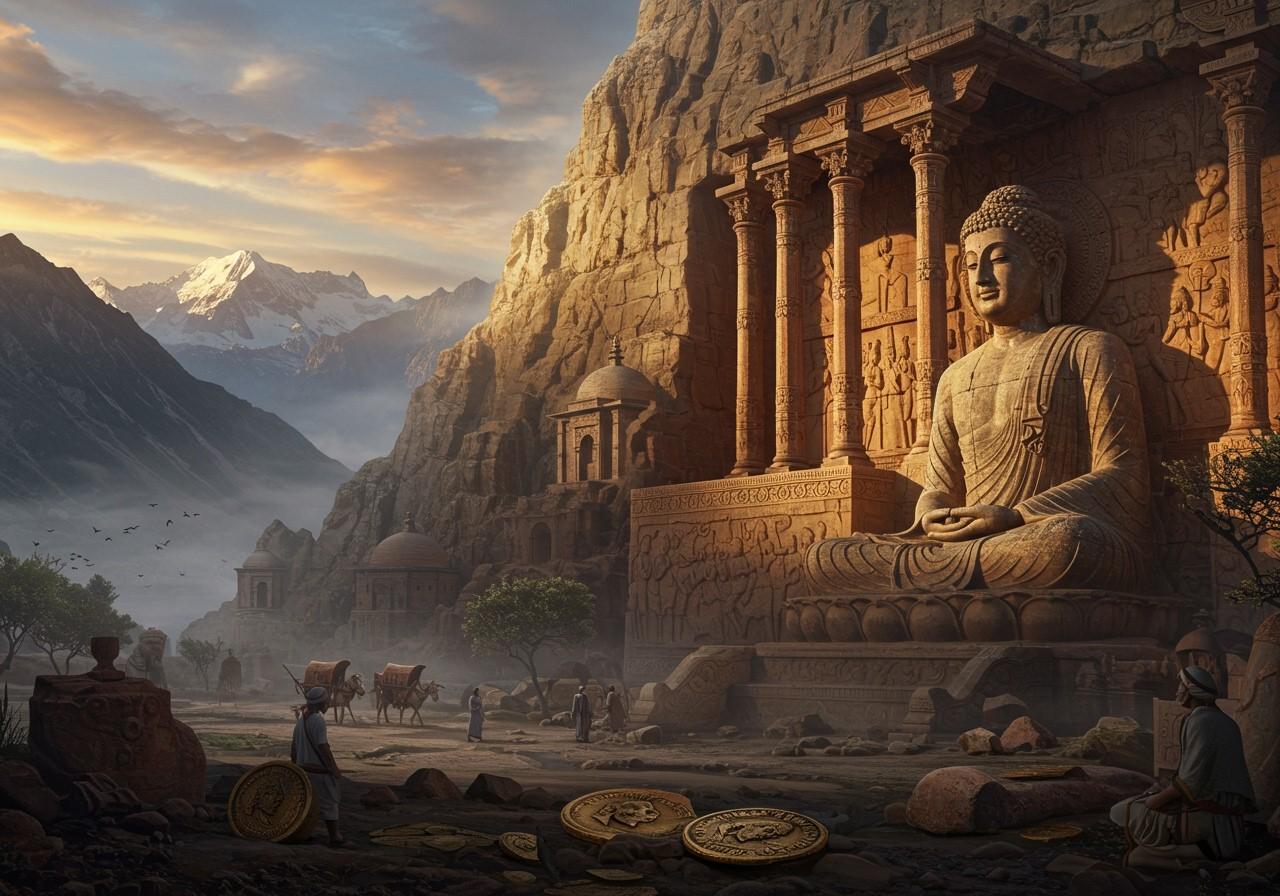
The Gandhara civilization, renowned for its distinctive Greco-Buddhist art, thrived between the 1st century BCE and the 7th century CE in present-day northern Pakistan and eastern Afghanistan. This article delves into the rise and fall of this remarkable civilization, exploring its rich history, artistic achievements, and the factors that led to its decline. For a deeper understanding of related cultural topics, explore our articles on Hinduism’s impact on Indian art and culture and the vibrant history and celebration of Holi.
Origins and Flourishing
Gandhara’s strategic location at the crossroads of major trade routes fostered a vibrant mix of cultures. Its position along the Silk Road facilitated trade and cultural exchange, contributing significantly to its prosperity. The introduction of Buddhism in the 3rd century BCE by Emperor Ashoka marked a turning point, leading to the fusion of Hellenistic and Buddhist artistic traditions.
This fusion gave rise to the unique Gandhara art style, characterized by intricate sculptures and stupas. Taxila, a major city in Gandhara, became a renowned center of learning, attracting scholars from across the ancient world. The Kushan Empire, particularly under rulers like Kanishka (circa 127-150 CE), further propelled Gandhara’s cultural and economic growth. Monumental Buddhist sites, such as the Bamiyan Buddhas, stand as testaments to the region’s architectural prowess.
Gandhara Art: A Unique Synthesis
Gandhara art is celebrated for its seamless blend of Greek, Persian, and Indian artistic elements. Emerging in the 1st century BCE, it is characterized by realistic human figures, intricate drapery, and elaborate iconography. Artists primarily used schist stone and stucco, enabling detailed craftsmanship and durability. The art often depicts scenes from Buddha’s life, Jataka tales, and various deities, weaving together mythological and historical narratives. Explore the spiritual side of art with our guide to Kali Ma devotion.
- Realistic Representation: Gandhara sculptures are renowned for their lifelike depictions of the human form, showcasing intricate details in clothing and expressions. This realism sets Gandhara art apart, giving it a unique visual appeal.
- Materials and Techniques: The use of schist stone and stucco allowed for detailed carvings and a smooth finish. These materials were readily available in the region and contributed to the distinctive look of Gandhara sculptures.
- Depictions and Narratives: Gandhara art frequently portrays scenes from Buddha’s life, Jataka tales, and various deities. These depictions served as visual narratives, conveying important religious and cultural stories.
The region’s architectural heritage includes magnificent structures like the monasteries at Takht-i-Bahi and the Buddhist complex at Jaulian. The spread of Gandhara art along the Silk Road significantly influenced artistic traditions in Central Asia, China, and Japan. Discoveries of artifacts and relics continue to provide valuable insights into the religious and social life of ancient Gandhara. You might also be interested in exploring the architectural wonders of the Aihole Durga Temple and learning about India’s sacred sites.
Decline and Legacy
Several factors contributed to Gandhara’s decline, including the White Hun invasions in the 5th century CE, which disrupted political stability and economic prosperity. The decline of the Silk Road diminished Gandhara’s importance as a commercial center. The rise of Islam in the 7th century CE led to the gradual decline of Buddhism in the region. Invasions, destruction of cities and cultural sites, environmental changes, and the lack of a strong central authority further contributed to its decline.
Despite its decline, Gandhara’s legacy endures. Its distinctive artistic style profoundly influenced Buddhist iconography in Central and East Asia. Architectural innovations, such as stupas and rock-cut monasteries, inspired similar structures in other Asian regions. Preserved artifacts in museums worldwide allow for continued study and appreciation. Historical sites like Taxila and the Bamiyan Buddhas are recognized as UNESCO World Heritage sites, attracting scholars and tourists alike. Gandhara’s history serves as a powerful example of cultural fusion and exchange in the ancient world. Delve into the history of another significant temple with our guide to the Dwarkadhish Temple.
Poojn.in: Connecting You with Gandhara’s Spiritual Legacy
Poojn.in offers a curated selection of authentic ritual items to help you connect with the spiritual essence of Gandhara’s Buddhist heritage. We offer a variety of products, including traditional prayer beads, incense holders inspired by ancient Gandharan designs, copper water vessels, meditation cushions, and premium incense sticks. Each item is carefully chosen to adhere to traditional specifications and quality standards. Visit Poojn.in to explore our complete collection and enhance your spiritual practice. You can also find beautiful murtis for your home, like this Radha Krishna Bigraha or this Maa Laxmi Lord Ganesha Murti.


